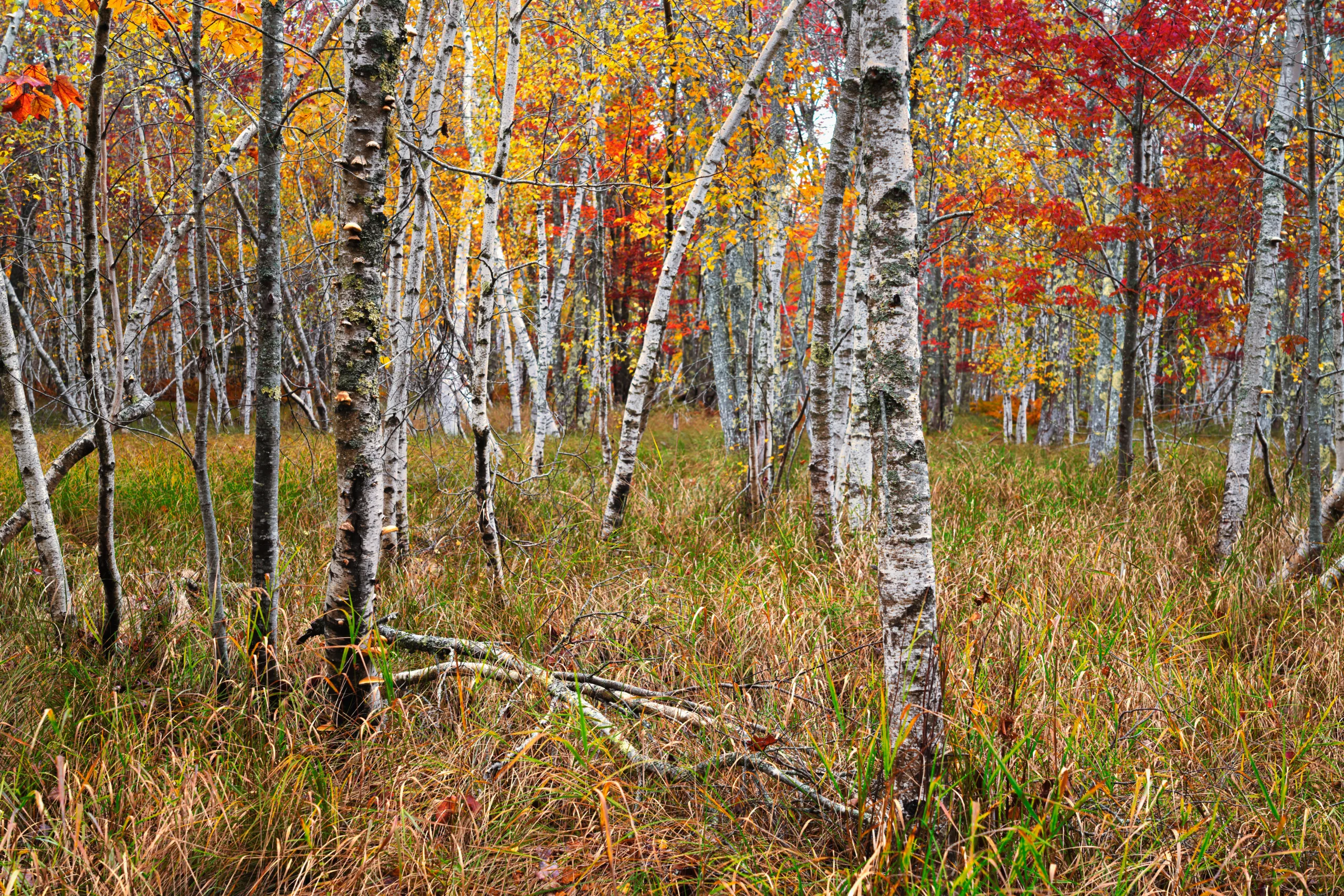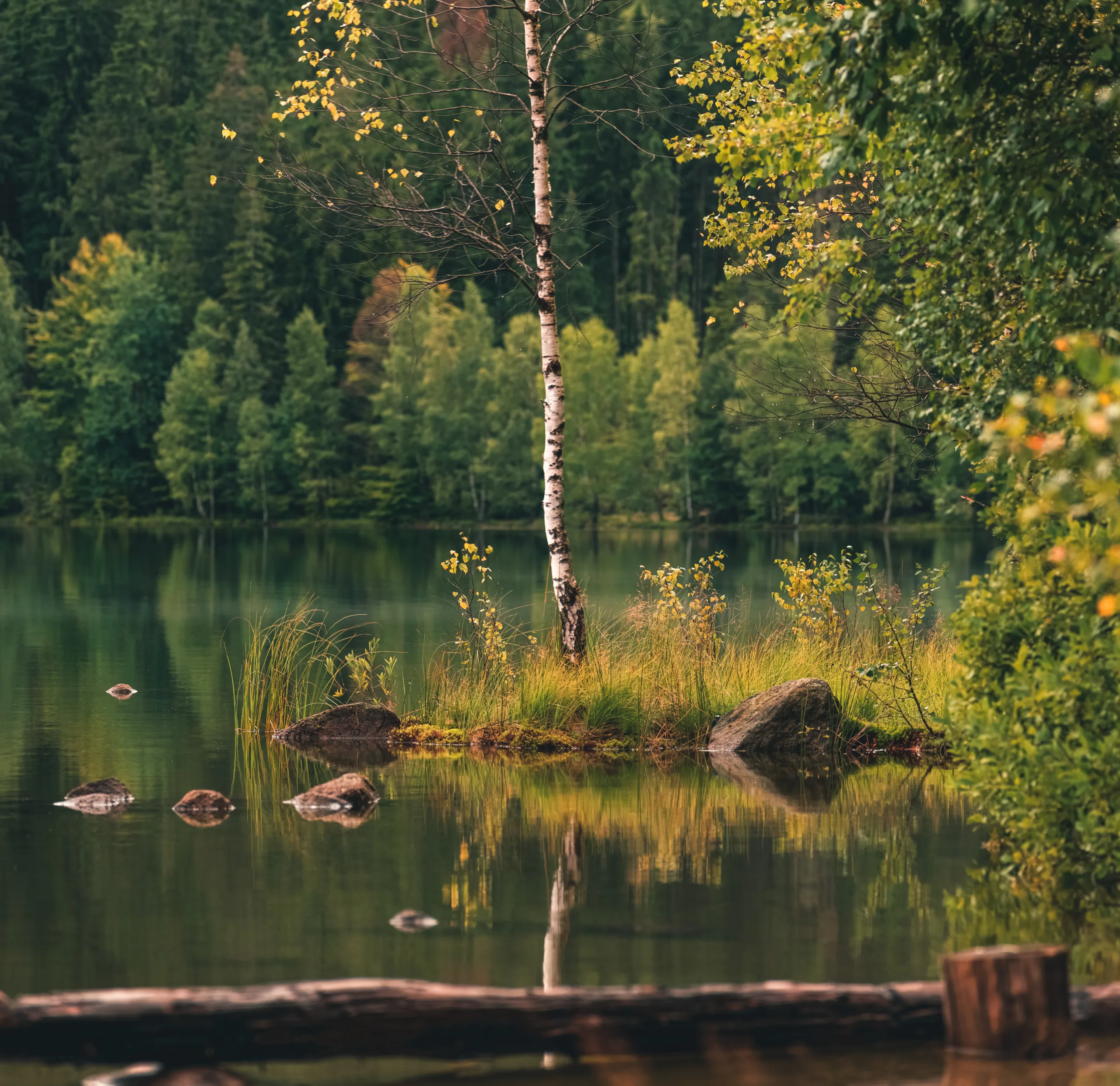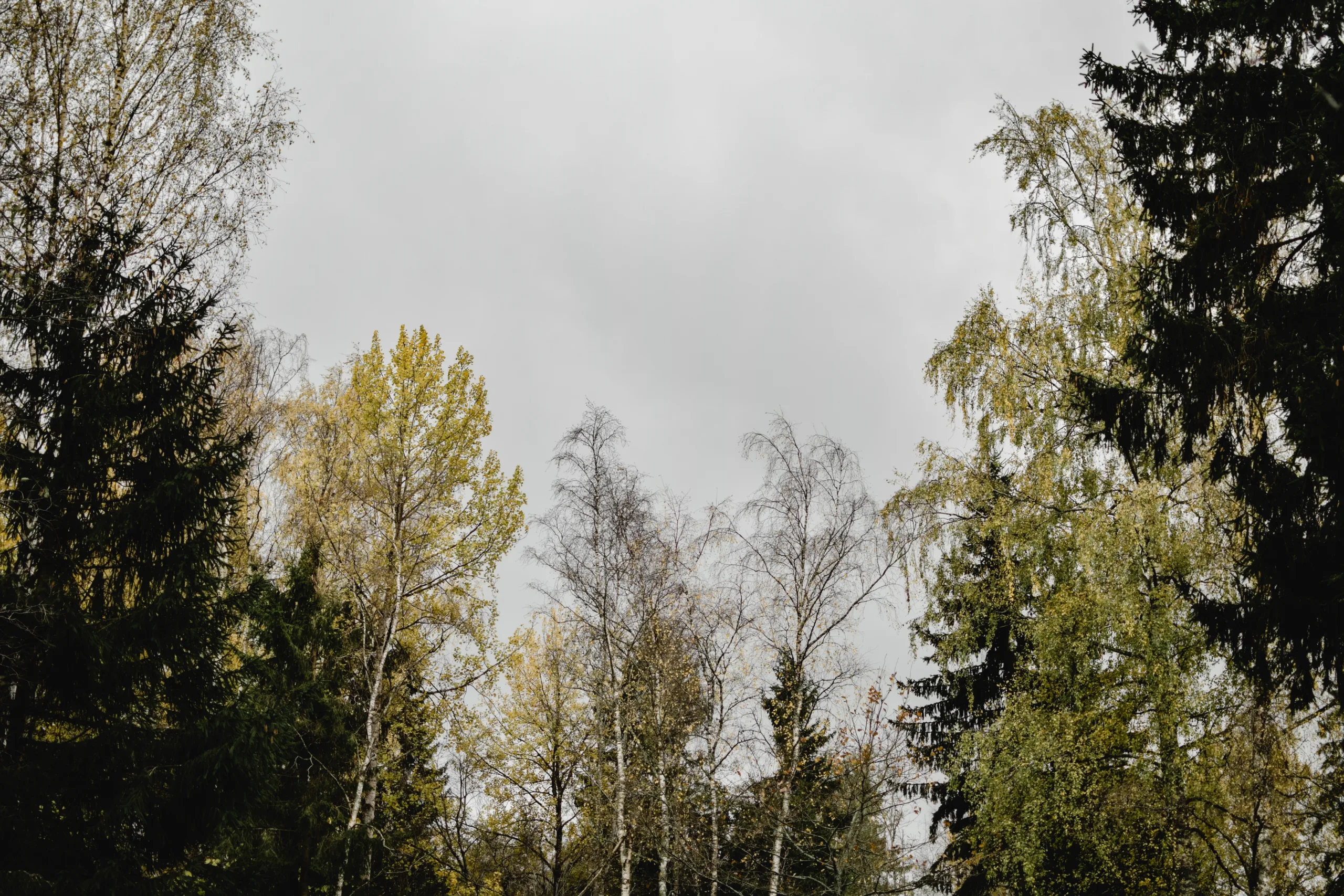Do you have a birch tree in your backyard and are wondering if it can easily fall over?
Birch trees are beautiful, but they can be more fragile than other types of trees. In this article, we’ll answer the question: do birch trees fall over easily? We’ll discuss the factors that could make a birch tree more prone to falling over, and explain how you can protect your birch from damage.
This information is important for anyone who wants to keep their birch tree standing for years to come. Read on to learn more about how to keep your birch tree healthy and secure!
The most common cause of birch trees falling over is an imbalance of roots to top growth. This can occur when a tree experiences rapid growth and its root system is unable to support its increased weight. Other causes of birch trees falling over include poor soil conditions, extreme weather conditions, and improper pruning.
Identifying a Birch Tree
Birch trees are some of the most recognizable trees with their white, scaly bark and delicate looking leaves. Identifying a birch tree is relatively easy once you know what to look for. Here are some of the features to look for when identifying a birch tree:
Leaves: Birch trees have delicate looking leaves that are oval or triangular shaped and have double-serrated edges. They are usually between 2 – 4 inches in length and can range from bright green to a yellowish-green color.
Bark: The bark of a birch tree is one of its most distinctive features. It is usually white or greyish in color and has an easily recognizable diamond pattern made up of thin, scaly plates. The bark can also have patches of black that come from fungus or other environmental factors.
Twigs: The twigs of the birch tree are slender and smooth in texture with an olive green color. They have small grayish-brown buds along them that ooze a yellow sap when broken off.
Fruit: The fruit of the birch tree is small and round, about 1/3 inch in diameter, and has sticky scales on them that help disperse the seeds as they move through the air. They can range from green to brown in color when ripe and dry out over time before being dispersed by wind or animals.
By taking note of these features, you will be able to easily identify a birch tree in any setting!
Characteristics of a Birch Tree
Birch trees are a type of deciduous tree that is known for its distinctive, white bark. They are native to colder climates, and can be found across much of the northern hemisphere. Birch trees are popular in landscaping and home gardens because they are fast-growing, disease-resistant, and provide good shade.
Birch trees have a shallow root system and typically grow up to 40 feet in height. They have an oval or pyramidal shape with branches that spread outwards from the trunk. The leaves of a birch tree are simple and ovate in shape and come in bright shades of green during the summer months.
Birch trees provide many benefits to their environment. Their leaves provide shelter for small birds and animals, while their bark serves as an important food source for many species of wildlife. The bark also provides nesting material for some species, such as chickadees and woodpeckers. Additionally, birch trees help to reduce soil erosion due to their deep root systems that help to stabilize the soil.
Overall, birch trees are an attractive addition to any landscape or garden due to their unique bark and fast-growing nature. They are also beneficial to the environment by providing food and shelter for wildlife while also helping to reduce soil erosion.
Are Birch Trees Resistant to Strong Winds?
Birch trees are a type of hardwood tree that can be found in almost every region of the world. While they are not particularly known for their resistance to strong winds, they do have some qualities that can help them withstand windy conditions. For example, birch trees have a shallow root system that helps anchor them into the soil and keep them upright during storms. Additionally, their bark is thick and strong enough to provide some protection against strong winds and flying debris.
Although birch trees have some natural protections against strong winds, it is still important to take precautions when planting one in windy areas. Planting birch trees in sheltered areas can help to protect them from the full force of the wind. It is also important to make sure the tree has been planted correctly and staked if necessary. This will help ensure that it is firmly rooted into the ground and won’t be easily uprooted by gusts of wind.
In conclusion, while birch trees may not be as resistant to strong winds as other types of trees, they do possess some qualities that can help protect them in windy conditions. By taking extra precautions when planting them in exposed areas, you can help ensure that your birch tree remains upright and healthy during gusty weather conditions.
Do Birch Trees Have Weak Roots?
Birch trees have a reputation for having weak roots, but this is not entirely true. While it is true that birch trees have shallow root systems, they are actually quite hardy and long-lived. The shallow root system allows them to be able to adapt to many different environments and soil types, making them a great choice for landscaping.
The shallow roots of birch trees are also beneficial in that they help prevent soil erosion. The shallow root system helps absorb water quickly and efficiently, reducing the amount of water runoff from the area. Additionally, these shallow roots can also help hold soil in place during heavy rains or floods.
Despite their shallow root systems, birch trees are surprisingly hardy and can live for many years if given adequate care and maintenance. Proper pruning and fertilization will help ensure that your birch tree will thrive for many years to come. Additionally, it is important to provide plenty of space around the tree for its roots to spread and take hold in the soil.
Overall, birch trees do have relatively weak root systems compared to other tree species, but they are far from weak and can be a great addition to any landscape or garden. With proper care and maintenance, these trees can live for many years while providing beauty and shade to their surroundings.

Strengthening the Roots of a Birch Tree
Birch trees are beautiful and sturdy, but their shallow root system can make them prone to damage from wind and flooding. Strengthening the roots of a birch tree is important to ensure that it stays healthy and strong. Here are some tips for doing so:
Mulch the soil around the tree. Mulching helps retain moisture in the soil, which is especially important for trees with shallow roots. Use a few inches of organic mulch such as wood chips or straw, spread evenly around the base of the tree.
Water regularly. A birch tree’s roots need a consistent supply of moisture to stay healthy and strong. Water your birch tree regularly, making sure to moisten both the topsoil and deeper layers of soil beneath it.
Fertilize in early spring and late fall. Applying fertilizer twice a year can help strengthen your birch tree’s root system by providing essential nutrients for growth. Use a fertilizer specifically designed for trees, and follow package instructions for application rates and timing.
Prune carefully. Pruning your birch tree helps keep it healthy by removing dead or damaged branches that can cause disease or pest infestations. Be careful when pruning so as not to damage any healthy branches or the trunk of your birch tree; if you’re unsure how to prune properly, contact an arborist for assistance.
Common Diseases of a Birch Tree
Birch trees are susceptible to several different diseases. These include cankers, borers, leaf spots, and rusts. Cankers are caused by various fungi and can cause bark lesions, dead branches, and death of the tree. Borers are small insects that tunnel under the bark and feed on the tissue beneath. Leaf spots are caused by a variety of fungi and can cause yellow or brown spots on the leaves of the tree. Rusts are caused by certain fungi that cause reddish-orange spots on leaves, twigs, and branches. In extreme cases, these diseases can lead to tree death if left untreated.
In addition to diseases, birch trees can also be affected by pests such as aphids, scale insects, and mites. Aphids feed on plant juices and can cause distorted foliage or stunted growth in trees. Scale insects form waxy coverings over themselves as they feed on sap from leaves and stems. Mites feed on the underside of leaves causing yellowing or bronzing of foliage. All three pests can weaken a tree’s vigor if left unchecked.
It is important to inspect birch trees regularly for signs of disease or pests as they can quickly spread if left untreated. Pruning out dead branches or removing affected foliage may help prevent further spread of disease or pest infestations. Fungicides may also be necessary to treat fungal diseases in some cases. Taking steps to reduce stress on the tree such as providing adequate water and nutrients can also help prevent problems with disease or pests in birch trees.
Location
Birch trees prefer full sun and soil with good drainage. Plant your birch tree in an area that receives at least six hours of direct sunlight per day. They will also require regular watering; soil should be kept consistently moist, but not soggy. Avoid planting birch trees in low-lying areas where standing water is common.
Fertilizing
Fertilize your birch tree twice a year – once in the spring and again in the fall – with a balanced fertilizer such as 10-10-10 or 12-12-12. Follow the instructions on the package for proper application rates and timing. If you are unsure about how much to use, consult with a local gardening center or extension office for advice.
Pruning
Pruning your birch tree should be done every two to three years, starting when it is young. This will encourage healthy growth and minimize disease issues. Prune branches that are dead, broken, or crossing one another as well as those that rub against each other. Never cut more than one-third of the tree’s branches during pruning.
Mulching
Mulching around the base of your birch tree helps keep weeds down and moisture levels consistent in the soil. Spread a 2- to 3-inch layer of organic mulch around the base of your tree, taking care not to pile it up against the trunk itself. Keep mulching several inches away from the trunk so it does not rot from excessive moisture.
Insects and Diseases
Birch trees are relatively hardy but can be susceptible to certain insect pests and diseases like leaf spot and canker diseases. Monitor your tree closely for signs of insects or disease and take appropriate action if necessary, such as spraying insecticides or fungicides if needed. Contact a local gardening center or extension office for advice on specific treatments if necessary.

Conclusion
Birch trees are generally a hardy species, but they can be prone to fall over easily in certain circumstances. These include disease, over-watering, and heavy snow or ice loads. If a birch tree is planted in an area with windy conditions, then the tree should be staked and its roots supported. Furthermore, the tree should be pruned regularly to reduce the risk of toppling.
In summary, birch trees are not particularly prone to falling over easily but can be made more susceptible when certain conditions arise. By following good planting practices and proper maintenance, including regular pruning, this risk can be minimized and ensure that your birch tree remains standing for many years to come.

My interest in trees started when I first saw the giant sequoias in Yosemite.
I was a teenager then, and I remember thinking, “I need to learn more about this.”
That moment stuck with me.
A few years later, I went on to study forestry at Michigan Tech.
Since graduating, I’ve worked in a mix of hands-on tree care and community education.
I’ve spent over ten years helping people understand how to plant, maintain, and protect the trees in their neighborhoods.
I don’t see trees as just part of the landscape.
They are living things that make a real difference in our daily lives.
